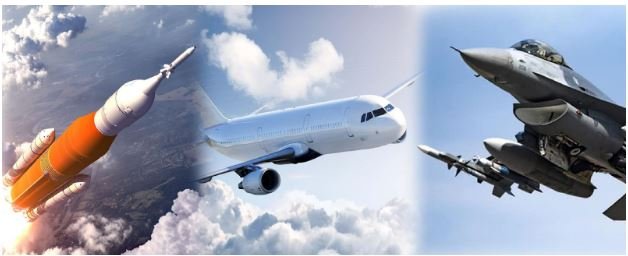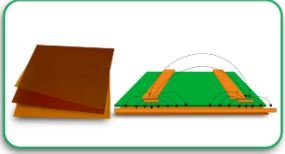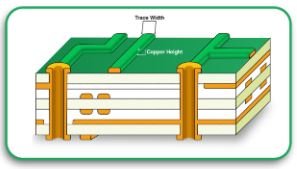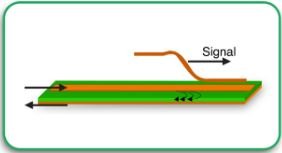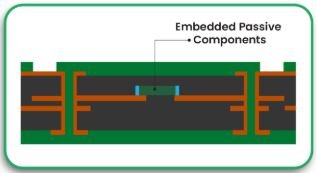Like all other industries, military and aerospace also need reliable PCB solutions. Not all PCBs can survive high temperatures, mechanical shocks, or radiation, making it extremely difficult to fabricate PC boards for consumer electronics. Therefore, unlike consumer electronics, these industries require overly durable fabrication techniques that ensure a long period of functionality without degradation in PC board performance.
Industry leaders utilize cutting-edge technology materials, controlled impedance, and specialized coatings to meet the stringent standards set by the military and aerospace industries. In this article, we will discuss the essential aspects of military-grade PCBs and analyze the latest developments in PC board fabrication while also outlining some of the essential components when choosing PCB manufacturers for mission-critical objectives in tandem with other objectives.
Why Military and Aerospace PCBs Require Specifically Tailored Solutions
Tools and electronics needed for defense and aerospace must function within countless external variables and challenges that continue to increase their chances of failure. Some of the key challenges include:
- Extreme Temperature Resistance – PCBs, while being used, should not lose effectiveness during extremely hot or subzero temperatures.
- Vibration and Shock Tolerance – Fighter jets, missiles, and satellites do contain their own set of functionality. The PC board needs to be able to survive extreme conditions and shocks while still retaining its capabilities.
- Electromagnetic Interference (EMI) Shielding – This is necessary towards preserving the integrity of the signals, especially in PCBs needed for high power applications.
- Radiation Resistance – For material used for space, it is crucial to ensure that the PCBs won’t lose effectiveness, even while being exposed to extreme radiation.
- Moisture and Corrosion Protection – In humid or saltwater PCBs need to function effectively as well without any corruption or corrosion.
To satisfy these needs, PCB suppliers use custom laminates, heavy copper plating, and complex via designs.
Important Aspects for Aerospace and Military PCBs
1. High-Temperature PTFE Polyimide Ceramic Hydrocarbon Laminate Thermoset.
Aircraft avionics and radar include PTFE, Polyimide, and Ceramic-filled Hydrocarbon laminates combined for unrivaled heat and stress resistance.
2. Heavy Copper PCB
These items are employed in power distribution systems for defense applications. Military-grade PCBs often feature 2-20 oz copper layers for improved current load efficiency.
3. Controlled Impedance Substrates for High Frequency and Microwave Modules
The most advanced RF and microwave PCBs used for radar and communication systems and electronic warfare usually need precise impedance control to reduce power loss.
4. Embedded Passive Components
To reduce weight and improve performance, modern military PCBs integrate embedded capacitors and resistors.
Advanced PCB Technology for Military and Aerospace Applications
1. Multilayer and HDI PCB
Space and aircraft applications need to be compact and lightweight, and high-density interconnect (HDI) PCBs with microvias and blind and buried vias achieve this.
2. Rigid-Flex PCBs
Flexible PCBs are used in drones, avionics, and satellite systems to improve weight and durability under mechanical stress.
3. Conformal Coating and Protective Finishing
PCB manufacturers deploy conformal coatings, ENIG (Electroless Nickel Immersion Gold), and hard gold finishes to safeguard them from wear and tear from chemicals, surface mounting machines, humidity, and corrosion.
4. Via Redundant Structures
Reliability critical PCBs have redundant vias alongside every PCB layer to guarantee electrical connection in extreme environmental conditions.
Steps In Testing And Certifying Military PCBs
Also, military and aerospace electronics have to adhere to some stringent quality and reliability requirements, such as:
- MIL-PRF-31032 & MIL-PRF-55110 – Performance specifications for rigid and flex PCBs.
- IPC-6012 & IPC-6013 – Reliability and performance requirements for multilayer PCBs.
- AS9100 Certification – Aerospace supplier’s quality management system.
- ITAR Compliance – Ensures PCBs for defense purposes are secured as per US laws.
Reliable rest assured, pc board fabrication requires a set of processes such as:
- Thermal Shock Testing – Thermally induced strains to determine the endurance of PCB.
- Vibration and Mechanical Stress Testing: Testing of strength of different materials and components of the structure s under conditions assumed to be accurate.
- X-ray Inspection and AOI (Automated Optical Inspection): These methods inspect hidden faults that cannot be found in ordinary multilayer PCBs.
How To Choose A Proper PCB Manufacturer for Military And Aerospace Use
Choosing the Right PCB Manufacturer for Military and Aerospace Applications: It is essential to select a PCB manufacturer as a trusted partner for long-term operational and regulatory requirements. You should pay attention to the following:
Experience in Military Grade PCB Manufacturing
Search for PCB suppliers who have an established reputation in high-reliability PCB designs for the aerospace and defense sectors.
Expanded Manufacturing Features
- Check that the supplier provides the following:
- Microvia and HDI PCB processes
- RF and microwave PCB development
- Rigid-flex and flex PCB assembly
- Adherence to Other Sector Requirements
- Collaborate with PCB suppliers who possess MIL, IPC, and ITAR certifications.
- Robust Supply Chain and ITAR Guidelines
- Military PCBs need a controlled ITAR supply chain to ensure zero infiltrations.
Trends Shaping Military and Aerospace PCB Manufacturing
AI-Powered Autonomous Systems
The requirement for military drones, surveillance systems, and AI-driven defense electronics will increase the availability of ruggedized PCBs with high computing power.
Overall Size and Weight Optimization
Compact pc board fabrication is an advantage for aircraft, satellites, and even wearable military devices.
5G and Advanced Secure Communication Technologies
Enhanced PCBs with controlled impedance guarantee excellent connectivity for high-altitude use by the military.
Space Ready PCBs
Ultra-high reliability and radiation-proof PCBs are essential for satellites and deep space scouts.
Expert Insights
The European Space Agency (ESA), in partnership with its industrial partners, has been continuously updating the standards for Printed Circuit Boards (PCBs) design, qualification, and procurement. The standards also include design margin which reduces the possibility of hidden short-circuit and open-circuit failures.
There are also additional inspection and tests such as temperature humidity bias test, conductive anodic filament test, interconnect stress test, and dark-field microscopy, that have been introduced for qualification and for lot conformance.
These methods are important to evaluate and qualify technology from ESA qualified PCB manufacturers and the high-density interconnect (HDI) technology which includes microvia.
In investigating the reliability of such advanced manufacturing techniques, various traditional and accelerated thermal stress tests are conducted on two and three layers of staggered and stacked microvia configurations, as well as the thermo mechanical modelling of stress factors. This paper explains the reasons behind the introduction of the updated standards, the initial reliability data on advanced HDI technology and benchmarking of the novel test methods.
Conclusion
For those searching for trustworthy military-grade PCBs, PCB Runners is the right partner. They are the leading provider of advanced PC board fabrication solutions.
Get your hands on High-Relibility PCBs now!
Contact PCB Runners and receive expert insight and military-grade PCB manufacturing solutions that are just right for you.
FAQs
What are military-grade individual PCBs?
Military-grade PCBs are super reliable circuit boards intended for the defense and aerospace industries. They are made for extreme conditions and use specialized materials.
What are the materials used in aerospace PCBs?
Several materials used are polyimide, PTFE, ceramic-filled lamination, and heavy copper layers for high-performance applications.
How do PCB manufacturers ensure reliability for military applications?
By using thermal shock testing, vibration testing, and X-ray inspection, coupled with compliance with a number of standards such as MIL-PRF and IPC.
Why are HDI and rigid-flex PCBs emerging as the best choice in aerospace electronics?
All of these technologies allow for higher miniaturization, lower weight, and greater durability, making them perfect for electronics space applications and avionics.
How do I select the right PCB manufacturer for defense applications?
Choose ITAR-compliant, AS9100-certified manufacturers who are easily reachable and have a background in high-reliability PC board fabrication.

